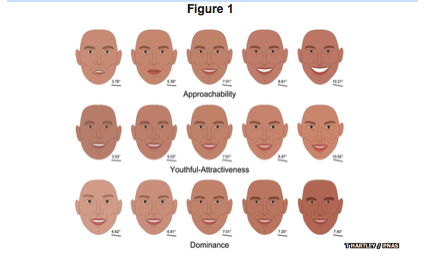Do First Impressions and Healthy Smiles count in enhancing profiles?
Categories:
Let’s explore the scientific findings …
It takes just one-tenth of a second for us to judge someone and make a first impression. Not only are people quick to form first impressions, they are also fairly accurate when the person presents him or herself genuinely. Individuals are also fairly reliable at understanding the first impression that he/she will project to others.
Willis and Todorov in 2006 at Princeton University found that trustworthiness and attractiveness were the two dominant traits most quickly detected and evaluated in a study of human faces.
Professors Jeffrey and Rhodes in the British Journal of Psychology reported that faces convey a wealth of information that we use to guide our social interactions. Emotions play a large role in our social interactions.
The perception of a positive or negative emotion on a face affects the way that an individual perceives and processes that face. For example, a face that is perceived to have a negative emotion is processed in a less holistic manner than a face displaying a positive emotion.
This research certainly evokes reflection when considering all our personal/business day-to-day human interactions. Who are those individuals we meet with bright, welcoming, confident smiles and more so who are those that potentially have more to offer, however project the wrong impression through concealing poor oral health? We all have our insecurities, however some are more easily rectified than others.
The ability of face recognition is apparent even in early childhood. The neurological mechanisms responsible for face recognition are present by age five. Research shows that the way children process faces is similar to that of adults. Adults’ process faces more efficiently. The reason for this may be because of advancements in memory and cognitive functioning that occur with age. Hence, how judgmental the human being can become with age?
In a more recent August, 2014 study Dr Tom Hartley, a neuroscientist from the University of York, reported that impressions of the traits of approachability, youthfulness/attractiveness and dominance can be formed in as little as 100 milliseconds, agreeing and extending upon Willis and Todorov’s earlier studies.
Dr Hartley stated, “Positive first impressions are especially important in a world dominated by social media, from LinkedIn to Tinder,” further confirming and updating Professors Jeffery and Rhodes research into 2014/15 trending.
Dr Hartley reported that increased measurable characteristics such as the shape of and the spacing around the eyes, nose and mouth (shape of teeth) promote social traits, such as trustworthiness or dominance. Figure 1

Q: So, Do First Impressions and Healthy Smiles count in enhancing profiles? A: We’ll let you be the judge … If you do know anybody that limits their personal or professional wellbeing by avoiding smiling due to poor oral health care - we have solutions. www.dentalmembers.com.au 1300 767 356
References
Accuracy and Calibration of First Impressions". Social Psychological and Personality Science 1 (1): 94–98.
"First impressions connected to facial features - CNN.com". Edition.cnn.com. Retrieved 1 August 2014.
Flora, Carlin. "The First Impression". Psychology Today. Archived from the original on 2011-02-20. Retrieved 2011-02-20.
Richard J. W. Vernon, Clare A. M. Sutherland, Andrew W. Young, and Tom Hartley. Modeling first impressions from highly variable facial images. Proceedings of the National Academy of Science, 2014.
Jeffery, L.; Rhodes, G. (2011). "Insights into the development of face recognition mechanisms revealed by face after effects". British Journal of Psychology 102 (4): 799–815
Willis, J.; Todorov, A. (2006). "First impressions: Making up your mind after 100 ms exposure to a face". Psychological Science (17): 592–598. doi:10.1111/j.1467-9280.2006.01750.x. Retrieved 17 May 2014

